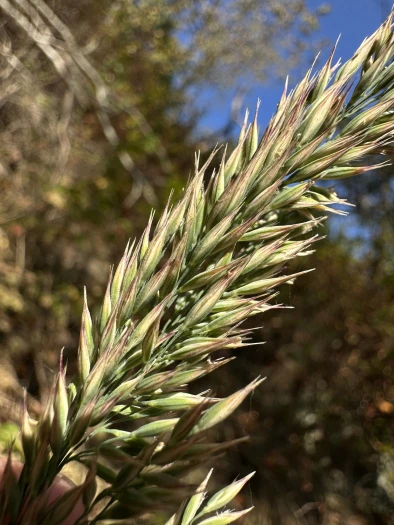(Greeneochloa coarctata)
(Greeneochloa coarctata)
/
/

© Matt Berger
CC BY 4.0
Image By:
© Matt Berger
Recorded By:
Copyright:
CC BY 4.0
Copyright Notice:
Photo by: © Matt Berger | License Type: CC BY 4.0 | License URL: http://creativecommons.org/licenses/by/4.0/ | Uploader: sheriff_woody_pct | Publisher: iNaturalist |
















Estimated Native Range
Climate Requirements for Pawtucket, Rhode Island
| This Plant | Your Site | Plant Suitability for Your Location | ||
|---|---|---|---|---|
| • Precipitation | 9" - 83" | 47" | Aquatic | Aquatic |
| • High Temp. | 40°F - 91°F | 84°F | Your summer temperatures are normal for this plant. | Excellent |
| • Low Temp. | -37°F - 45°F | 17°F | Your winter temperatures are normal for this plant | Excellent |
This plant should grow well at your location with about N inches per year (Y minutes per month) of irrigation.
Summary
Greeneochloa coarctata, with no widely recognized common name, is a perennial grass that is typically found in wetland areas, including marshes and along the edges of ponds and streams. This species is native to North America, particularly in regions with a temperate climate. It is a clumping grass that can reach varying heights depending on environmental conditions, but it generally remains under 3 feet tall. The grass has a distinctive appearance with narrow, green leaves and produces inconspicuous flower spikes during the growing season.
Greeneochloa coarctata is valued for its ability to stabilize soil and prevent erosion, especially in riparian zones. It is often used in wetland restoration projects and can be an attractive addition to water gardens or naturalized areas. In cultivation, it requires consistently moist or wet soil and can thrive in full sun to partial shade conditions. While it is not typically grown for ornamental purposes, its presence can enhance biodiversity and provide habitat for wildlife. Care should be taken to ensure that it does not become invasive outside its native range, as it can spread rapidly in suitable conditions.CC BY-SA 4.0
Greeneochloa coarctata is valued for its ability to stabilize soil and prevent erosion, especially in riparian zones. It is often used in wetland restoration projects and can be an attractive addition to water gardens or naturalized areas. In cultivation, it requires consistently moist or wet soil and can thrive in full sun to partial shade conditions. While it is not typically grown for ornamental purposes, its presence can enhance biodiversity and provide habitat for wildlife. Care should be taken to ensure that it does not become invasive outside its native range, as it can spread rapidly in suitable conditions.CC BY-SA 4.0
Plant Description
- Plant Type: Grass
- Height: 2-3 feet
- Width: 1-2 feet
- Growth Rate: Moderate
- Flower Color: N/A
- Flowering Season: Summer
- Leaf Retention: Deciduous
Growth Requirements
- Sun: Full Sun, Part Shade
- Water: Medium
- Drainage: Medium
Common Uses
Bird Garden, Erosion Control, Low Maintenance
Natural Habitat
Native to wetland areas in temperate North America
Other Names
Common Names:
Scientific Names: Greeneochloa coarctata, Agrostis glauca, Agrostis phleoides, Agrostis phleoides, Arundo canadensis, Arundo coarctata, Arundo glauca, Calamagrostis cinnoides, Calamagrostis coarctata
GBIF Accepted Name: Greeneochloa coarctata